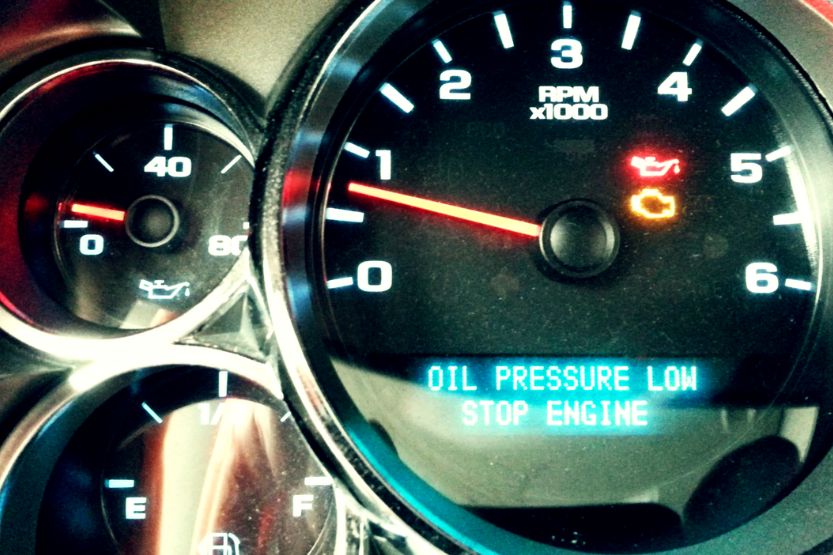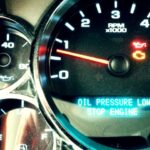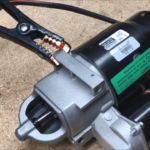If you are driving and notice that the low oil pressure warning light has come on, it is important to address the issue immediately. This light indicates that the oil pressure in your engine is lower than normal, which can lead to serious engine problems if left unchecked. Fortunately, resetting the low oil pressure light is a relatively simple process that can be done at home with just a few basic tools.
The first step in resetting the low oil pressure light is to determine the cause of the problem. This could be due to a number of factors, including low oil level, a clogged oil filter, or a faulty oil pressure sensor. Once the cause of the low oil pressure light has been identified and addressed, the light can be reset to ensure that it does not continue to come on unnecessarily.
It is important to note that resetting the low oil pressure light should not be seen as a permanent solution to the underlying problem. If the light continues to come on after it has been reset, it is important to have the vehicle inspected by a qualified mechanic to determine the cause of the issue and ensure that it is properly addressed.
Understanding the Low Oil Pressure Light

When the low oil pressure light comes on, it can be a cause for concern for many drivers. However, understanding what the light means and why it comes on can help alleviate some of that concern. In this section, we will explore what the low oil pressure light means and why it may come on.
What the Light Means
The low oil pressure light is an indicator that the oil pressure in the engine is below the recommended level. This can be caused by a variety of factors, including low oil level, a faulty oil pump, a clogged oil filter, or an internal oil leak. If the light comes on, it is important to address the issue as soon as possible to prevent engine damage.
Why the Light Comes On
There are several reasons why the low oil pressure light may come on, including:
- Low oil level: If the oil level is below the minimum dipstick line, the oil pressure may drop.
- Faulty oil pump: The oil pump is responsible for circulating oil throughout the engine. If it fails, the oil pressure may drop.
- Clogged oil filter: A clogged oil filter can restrict oil flow, causing a drop in oil pressure.
- Internal oil leak: An internal oil leak can cause a drop in oil pressure by reducing the amount of oil in the engine.
- Faulty oil pressure sensor: A faulty oil pressure sensor can cause the light to come on even if the oil pressure is within the recommended range.
If the light comes on, it is important to address the issue as soon as possible to prevent engine damage. It is recommended to check the oil level and have the vehicle inspected by a qualified mechanic to determine the cause of the low oil pressure.
Checking the Oil Level
Before resetting the low oil pressure light, it’s important to check the oil level in the engine. Here’s how to do it:
Locating the Dipstick
The dipstick is usually located near the front of the engine and has a brightly colored handle for easy identification. If you’re having trouble finding it, consult your car’s owner’s manual.
Checking the Oil Level
Once you’ve located the dipstick, follow these steps to check the oil level:
- Make sure the engine is turned off and has been sitting for at least 5 minutes to allow the oil to settle.
- Pull the dipstick out of the engine and wipe it clean with a rag or paper towel.
- Insert the dipstick back into the engine and pull it out again.
- Check the oil level on the dipstick. There should be two marks on the dipstick indicating the minimum and maximum oil levels. The oil level should be between these two marks.
If the oil level is low, add more oil to the engine and re-check the level. If the oil level is within the acceptable range, proceed with resetting the low oil pressure light.
Resetting the Low Oil Pressure Light
Resetting the low oil pressure light is a simple process that can be done by following a few easy steps. This section will guide you through the process of resetting the low oil pressure light in your car.
Identifying the Reset Button
The first step in resetting the low oil pressure light is to locate the reset button. The reset button is usually located on the dashboard or instrument panel of your car. However, the location of the reset button may vary depending on the make and model of your car. You can check your car’s owner’s manual to find the location of the reset button.
Resetting the Light
Once you have located the reset button, follow these steps to reset the low oil pressure light:
- Turn on the ignition without starting the engine.
- Press and hold the reset button until the low oil pressure light turns off. This may take up to 30 seconds.
- Release the reset button.
- Start the engine and check if the low oil pressure light comes on again. If the light stays off, then the reset was successful.
If the low oil pressure light comes on again after resetting it, then there may be an issue with the oil pressure sensor or the oil pump. In this case, it is recommended to take your car to a mechanic for further diagnosis and repair.
It is important to note that resetting the low oil pressure light does not fix the underlying issue causing the light to come on. It is only a temporary solution to turn off the light. Therefore, it is important to address the root cause of the problem to prevent any potential damage to your car’s engine.
When to Seek Professional Help
While resetting the low oil pressure light can be done at home, there are certain situations where it’s best to seek professional help. Here are some signs that there may be a more serious problem with your vehicle:
Signs of a More Serious Problem
- Low oil pressure light comes on frequently, even after resetting it
- Engine is making unusual noises or knocking sounds
- Engine is overheating
- Oil is leaking from the engine
If you notice any of these signs, it’s important to take your vehicle to a mechanic as soon as possible. Ignoring these symptoms can lead to serious engine damage and costly repairs.
When to Take Your Vehicle to a Mechanic
If you’ve tried resetting the low oil pressure light and it continues to come on, or if you notice any of the signs of a more serious problem, it’s time to take your vehicle to a mechanic. A professional mechanic can diagnose the issue and make the necessary repairs to get your vehicle running smoothly again.
Additionally, if you’re not comfortable working on your vehicle or don’t have the necessary tools or experience, it’s best to leave the job to a professional. Attempting to fix the issue yourself can lead to further damage and costly repairs.


![How to Flatten a Tire Quickly and Safely [Legal] how to flatten a tire quickly and safely](https://roadsumo.com/wp-content/uploads/2022/05/how-to-flatten-a-tire-quickly-and-safely-150x150.jpg)
![Low Tire Pressure Light On But Tires Are Fine [Why Is This?] low tire pressure light on but tires are fine](https://roadsumo.com/wp-content/uploads/2021/07/low-tire-pressure-light-on-but-tires-are-fine-150x150.jpg)




![Read more about the article Pennzoil Ultra Platinum 5w30 Oil [Full Review]](https://roadsumo.com/wp-content/uploads/2022/02/Pennzoil-ultra-platinum-5w30-oil-300x200.jpg)
